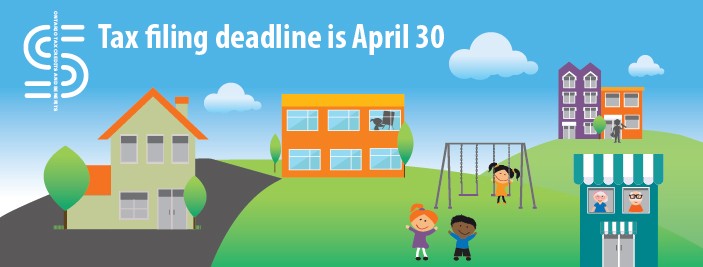Can I use Home Improvements as a Tax Deduction
Post on: 14 Июнь, 2016 No Comment

The rules regarding tax deductions for home improvements and repairs can be complex and confusing, even for the pros. But sooner or later, all properties are going to need a little TLC and you’re going to have to figure out how to treat them on your tax returns.
First, let’s take a look at personal residences.
Home Improvement and Tax Deductions for Personal Home
The IRS considers repairs and renovations on your personal residence to be personal expenditures, not business expenditures. So unless special circumstances apply, such as the use of part of your home for business purposes (see the so-called “home office deduction ” for more information on this), you cannot take a current-year tax deduction for maintenance costs and renovations on your personal residence.
In compensation, however, your tax break for personal homeownership comes when you sell the property: Provided you have lived in the property for at least three of the five years prior to the sale (special rules apply for military members who had to leave home on orders), you are entitled to a capital gains tax exclusion of $250,000 if you are single or $500,000 if you are married and file a joint income tax return.
An Introduction to Tax Basis
The IRS calculates a taxable gain as the difference between your sale price for the property and your tax basis. This number is the sum of all investments you have made in the property over the years, from the time you made the purchase through the new roof to the new paint and the new indoor pool you put in, all the way to replacing the bathroom tiles right before your real estate agent showed the home.
Then you subtract any deductions you took to arrive at your adjusted basis (though these are few and far between for personal residences). Your taxable gain is your sale price minus your adjusted basis. If the resulting number is negative, then you have a capital loss.
For investment properties. however, the system is more complicated. You must differentiate between a renovation or improvement and a repair. Further, you must understand depreciation and amortization, which is how costs that provide a benefit over many years, as well as the gradual wear and tear or decay of a property, are accounted for on your tax return.
Repairs vs. Home Improvements and Renovations
When you spend money simply to keep a property functioning and usable, and prevent its deterioration, or do routine and ongoing maintenance on an investment property, as opposed to a personal residence, the IRS classifies these activities as repairs, and recognizes these as an everyday cost of doing business.
There is a grey area between repair projects and renovations. But according to a recent article in the Journal of Accountancy, you can’t take a direct deduction for anything you pay for brand new buildings, nor can you take a current year deduction for any permanent improvements that increase your property values. Additionally, you don’t get to deduct any amount you spend restoring property (other than routine repairs), or in renovating a property after you’ve already taken a depreciation deduction. Moreover, under Treasury Regulation 1.263(a)-1(b), you can’t immediately deduct the cost of any projects that substantially prolong the useful life of property owned by the taxpayer or (2) adapt property to a new or different use.
Repairs and Routine Maintenance
Here are some examples of repairs:
- Cleaning carpets and drapes
- Cleaning air ducts and vents
- Repairing a broken handrail in a shower or staircase restoring the original function of the property.
- Repairing broken glass after severe weather.

Renovations and Home Improvements
Renovations, on the other hand, are projects that involve improving the property from its original or normal function, increasing the property’s value, substantially lengthening its expected life, or converting it to a new purpose altogether. Generally, these are expenditures that will pay dividends or provided benefits for longer than one year and potentially improve your investment income or resale value as an investor.
These expenditures cannot generally be deducted all in the first year. Instead, the IRS does not consider these costs to be business expenses, deductible as you pay them. Instead, the IRS considers these expenditures to be capital investments and subject to a different set of rules: You must generally spread these deductions out over the probable useful life of the property in a process called amortization and depreciation.
Example of Depreciation
Let’s say you wanted to build an addition to an investment property, to install, say, a new bedroom. You spend $25,000 on the renovation. It adds to the value of the property, so it does not qualify for a tax deduction in the current year.
By spending the $25,000, you have increased your tax basis in the property by the same amount.
After that point, however, the IRS knows that that home improvement, like almost any capital investment, will deteriorate over time. So the tax code provides a way for you to deduct the invisible losses represented by that deterioration and wear and tear. To figure out your allowable deduction, fill out a copy of IRS Form 4562. The IRS publishes more details in Publication 946 – How To Depreciate Property. But in a nutshell, you can choose one of a few different methods to calculate your annual depreciation.
Each kind of property has a different depreciation schedule, based on an estimate of its useful life. Investment structures are assumed to have a useful life of 27 years, under Modified Accelerated Cost Recover System (MACRS) rules – which is what you use for property you placed into service prior to 1986, so you can gradually take your deduction over that period of time. However, your tax basis declines as you recoup your costs through depreciation, as well. For residential real property years, theoretically, your adjusted basis in the asset will actually reach zero after 27.5 years – the depreciation period for residential rental real estate.
Another example: What can you deduct each year on a $25,000 capital improvement project? The most straightforward method is this: Divide your investment by the depreciation period for that class of property. Since residential real estate is 27.5 year property, you can take a deduction of $909.91.
cost/depreciation period = depreciation tax deduction
$25,000/27.5 = $909.91
The process of spreading depreciation deductions out over the expected life of a piece of property is called capitalization.
Note that you cannot depreciate land. Land doesn’t wear out (although you can claim depletion allowances for the extraction of timber and minerals).
For a full breakdown of depreciation rules for residential rental real estate, see IRS Publication 527 – Residential Rental Property.














